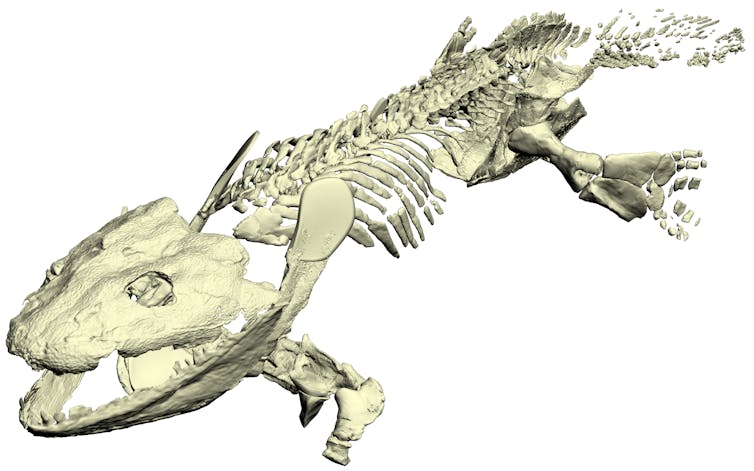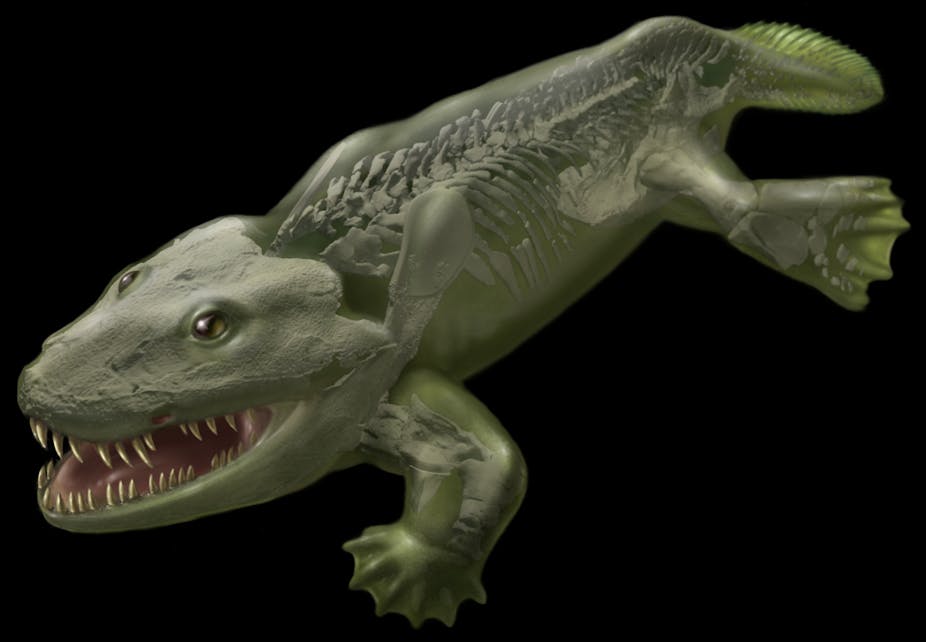Palaeontology has gone high-tech: no more wax and plaster-cast models. Instead, 3D data from computed tomography (CT) scans is overturning long-held views of how the earliest land animals moved.
Research published today in Nature reveals how a famous extinct animal, the early four-legged vertebrate (tetrapod) called Ichthyostega, moved on land 360m years ago.
One major problem in putting together fossil skeletons is actually getting the fossil out of the rock, but now palaeontologists don’t have to! Instead, the CT scans allow the virtual preparation of the fossil so delicate bones can be fully isolated and then fitted together so the anatomy can be better understood.
It was this process that has allowed scientists (Stephanie E. Pierce and Professor John R. Hutchinson from the UK’s Royal Veterinary College and Professor Jennifer A. Clack from the University of Cambridge) to overturn long held assumptions on how one of the earliest tetrapods moved from the water on to land.
Ichthyostega was first discovered in East Greenland in 1932 and is mostly figured as the first four-legged fish. But this new work shows that Ichthyostega could not walk using all four limbs because the limbs were not able to rotate in a manner that would allow terrestrial locomotion.
Instead Ichthyostega used the front limbs to haul itself along the surface.

The next step is to achieve what many palaeontologists dream of – to reconstruct the soft anatomy. This study shows how the latest imaging technology combined with a strong knowledge in comparative anatomy can enhance our understanding of how these ancient animals moved.
Importantly, the new work provides a clearer picture of how our early ancestors made it out of the aquatic environment and on to land.

